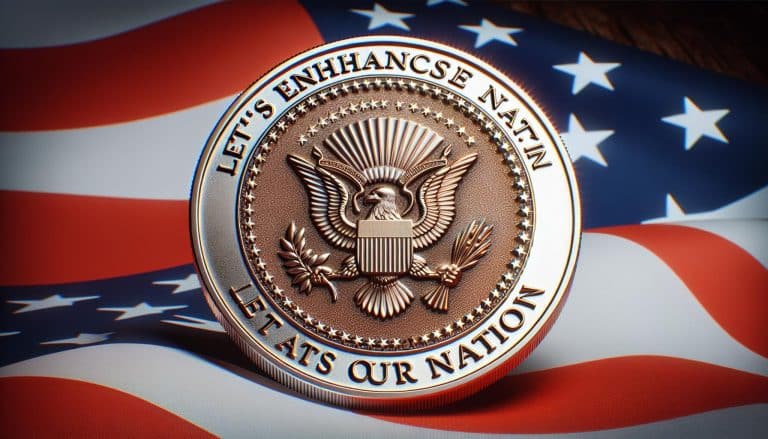Xrp Mainstream Integration
Ripple (XRP) is a cryptocurrency and digital payment system that has been gaining traction in the financial sector since its launch in 2012. It utilizes blockchain technology to facilitate fast and secure transactions, allowing users to make international payments quickly and without worry. XRP has seen an increasing level of adoption in mainstream markets, with banks, investment firms, and other financial institutions beginning to integrate it into their operations. This article will explore the benefits, challenges, growth potential, risks and regulations surrounding XRP mainstream integration.
Overview of XRP
Ripple (XRP) is one of the world’s top digital currencies, with a market capitalization of over $13 billion USD as of October 2019. XRP is a decentralized open-source payment network, built on blockchain technology and distributed ledger system. The system uses its native cryptocurrency, XRP, to facilitate transactions and maintain its own internal ledger. It also allows users to transfer funds without having to rely on banks or other financial institutions. In addition, Ripple has embraced social media platforms such as Twitter and YouTube to promote its mission of making international payments faster and more cost effective. This strategy has allowed it to be one of the first virtual currencies to gain widespread adoption in the mainstream. As a result, it has become increasingly more accepted by businesses and consumers alike; allowing for greater liquidity within the market. Consequently making it easier for people around the world to access this revolutionary form of digital money.
The increasing popularity of XRP among mainstream audiences can be attributed in part to its ability to provide fast transaction times at low costs when compared with traditional banking systems. Furthermore, its use of distributed ledger technology provides increased security for users involved in international payments and transfers while providing greater transparency into their activities than ever before possible with conventional payment methods. These advantages have led many large companies such as MoneyGram and Western Union towards integrating Ripple into their existing infrastructure; further driving awareness about XRP amongst both businesses and consumers worldwide.
XRP Adoption in the Mainstream
The increasing adoption of XRP in payment systems, online platforms, and financial institutions has been instrumental in its mainstream integration. Many of these organizations have identified the benefits that XRP can offer them, such as faster transaction speeds and lower transaction costs. This, combined with the fact that XRP is decentralized and not owned by any single entity, has made it an ideal choice for many businesses looking to streamline their payments processes. The growth of XRP adoption is likely to continue into the future as more companies recognize its potential value.
Payment Systems
Payment systems are revolutionizing the way money is exchanged, with Ripple’s XRP playing a significant role. With real time payments, merchants can now accept XRP quickly and securely, allowing them to serve customers who use digital currencies. This has created new opportunities for businesses to increase their customer base and expand into new markets.
| Advantages | Disadvantages |
|---|---|
| Low cost transactions | Volatility of currency prices |
| Speed and efficiency | Limited acceptance by merchants |
| Global reach & accessability | Difficulty in tracking transaction history |
| Secure & reliable blockchain technology | Regulatory uncertainty in certain countries/regions |
XRP has become increasingly popular due to its advantages over traditional payment systems, but there are still some drawbacks that need to be addressed before it can achieve widespread mainstream integration. Despite this, its potential as a tool for global payments is undeniable, and the future looks promising for XRP adoption in the mainstream. Transitioning into the subsequent section about ‘online platforms’, it is clear that XRP will continue to play an important role in online payments as well.
Online Platforms
Online platforms are providing innovative ways to facilitate payments, allowing users to quickly and securely transact in digital currencies such as XRP. This has resulted in a more efficient user experience for users wishing to make purchases with the currency, while also allowing merchants to accept XRP payments easily. Furthermore, these online platforms have lowered the barrier of entry for those interested in entering the cryptocurrency space by simplifying the process of obtaining and trading digital currencies. As such, these platforms have been instrumental in helping XRP gain mainstream integration, making it more accessible and widely accepted across multiple channels. The increased merchant acceptance of XRP on popular online platforms has helped spur greater adoption of the currency, leading to increased liquidity and usage. With this growing traction and widespread acceptance of XRP on online platforms, financial institutions may soon follow suit in offering customers access to the cryptocurrency.
Financial Institutions
Financial institutions have the potential to become major players in the cryptocurrency space by providing customers access to digital assets such as XRP. Banks and merchants can now accept, store, and even send XRP through their infrastructure. This opens new opportunities for both consumers and businesses alike:
- Consumers can take advantage of faster transaction times and lower fees than traditional payment methods.
- Businesses can benefit from increased efficiency when it comes to money transfers and payments.
- Financial institutions can capitalize on new revenue streams generated from fees associated with XRP transactions.
- Merchants will be able to offer a secure and reliable payment option that customers are already familiar with.
In addition, financial institutions may be able to leverage their existing customer base for increased adoption of XRP, potentially leading to broader mainstream integration of the asset. By offering these services, banks could significantly reduce the barrier of entry into the world of cryptocurrencies for their customers, making it easier than ever before for people to get involved in this emerging technology. Transitioning into the benefits of mainstream integration would provide an understanding that there are multiple advantages that come along with having access to digital currencies such as XRP across various platforms including online retail stores, brick-and-mortar establishments, banking systems etc., which is why many entities are looking into ways they can integrate them into their operations in order to remain competitive in today’s market landscape.
Benefits of XRP Mainstream Integration
Utilizing XRP technology in mainstream applications could revolutionize the way society conducts transactions, allowing for unprecedented speed, accuracy, and security. Alternative uses of XRP can include the ability to transfer funds instantly between two parties across borders with near-zero fees. With scalability concerns mitigated by utilizing the blockchain technology behind XRP, transferring large sums of money or performing complex financial tasks such as foreign exchange trades can be done quickly and securely. This capability would provide substantial benefits to both businesses and individuals who may need to move money quickly across international boundaries without incurring high fees or delays associated with traditional methods. By leveraging the power of this distributed ledger technology, transactions that once took days or weeks can now take seconds with no additional cost. Transitioning into using XRP in mainstream applications would thus provide numerous advantages to users and institutions alike.
Challenges of XRP Mainstream Integration
Despite the potential advantages of adopting distributed ledger technology, there are still certain challenges associated with its widespread use in mainstream applications. One major challenge is the lack of interoperability between distinct blockchain networks and protocols. This issue can be difficult to overcome due to the complex nature of distributed ledger technology and the need for different systems to communicate without any compatibility issues. Additionally, scalability issues have been a significant problem for blockchain-based projects, as they make it difficult for systems to support increasing volumes of transactions or data storage without suffering from slow processing speeds or technical glitches. As such, many projects have had difficulty achieving mass adoption due to these underlying technical problems. Nevertheless, with continued advances in blockchain research and development, there is potential for growth in terms of widespread use and mainstream application.
Potential for Growth
As advancements in blockchain research and development continue to be made, there is a great potential for exponential growth with regards to the widespread use of distributed ledger technology. XRP has been identified as one of the most promising digital assets on the market due to its capacity for alternative uses and scalability issues.
The potential for XRP mainstream integration includes:
- Improving global payment systems
- Enhancing financial inclusion
- Allowing fast, secure, and low-cost international transfers
These benefits could lead to greater financial opportunity for individuals, businesses, and financial institutions alike. With these advantages in mind, it is clear that there are numerous opportunities available for XRP within the global economy. Consequently, this leads into an examination of the risks associated with widespread adoption such as regulations and compliance measures.
Risks and Regulations
The potential widespread adoption of distributed ledger technology presents certain risks to consider, such as regulations and compliance measures. Central Bank oversight is a major factor in the integration of XRP into mainstream finance, as there are currently very few regulatory guidelines for digital assets. This means that governments could potentially limit or even prohibit the use of XRP in certain jurisdictions, creating an uncertain future for its adoption. Additionally, digital security is another area where XRP may face resistance due to the potential threat posed by hackers and malicious actors. While blockchain technology offers enhanced security compared to traditional financial networks, it still requires robust protocols and procedures to ensure that transactions remain secure and private. As such, investments in XRP should be made with caution given the lack of regulatory oversight and security protocols currently in place. Consequently, stakeholders must assess both the risks associated with investing in XRP as well as possible solutions before committing resources to this emerging asset class. With these considerations in mind, it is important to look at the future of XRP if it were able to gain greater traction within mainstream finance.
Future of XRP
The potential for distributed ledger technology to revolutionize the financial sector makes it an exciting asset for investors, with XRP being a particularly promising example. XRP has seen significant growth in recent years, but its future potential within mainstream markets and its ability to achieve mass adoption remain largely untapped. To this end, the community behind XRP is investing heavily in both public outreach initiatives and marketing campaigns that aim to increase awareness of the cryptocurrency’s capabilities. Through such activities, they hope to expose more people to the benefits of blockchain technology and help make XRP more accessible to everyday users as a form of payment or investment. Additionally, XRP is partnering with various organizations such as banks and financial institutions in order to create specialized services that can meet their individual needs and promote wider usage of the cryptocurrency’s network. These efforts could potentially lead to greater liquidity and market acceptance of XRP in the future, helping it reach mass adoption across multiple industries.
Frequently Asked Questions
What are the most popular uses for XRP?
XRP, a cryptocurrency designed for institutional investors and merchant payments, is becoming increasingly popular due to its low transaction fees and scalability. It has gained significant traction among businesses as a payment method, making it one of the leading digital currencies in the market.
How does XRP compare to other cryptocurrencies?
Ripple’s native cryptocurrency, XRP, has notable advantages for financial applications compared to other digital currencies. It is faster, more cost-effective and provides scalability that is unmatched in the crypto space. This makes it an attractive choice for mainstream integration and adoption.
What are the potential risks of investing in XRP?
Investing in XRP carries risks, such as the potential for regulatory non-compliance and liquidity shortages. 70% of exchanges lack proper compliance with anti-money laundering rules when dealing with this cryptocurrency. Moreover, its high volatility can lead to liquidity issues if not managed properly.
How do I buy XRP?
XRP can be purchased via online exchanges and digital wallets, with buying limits and transaction fees varying across providers. It is important to research the options available and compare features such as cost, security, user reviews, and level of support.
What is the current market value of XRP?
The current market value of XRP is astonishingly high, with mining pools and the Ripple Network playing a major role in driving its success. Analysts agree that XRP has emerged as one of the most popular cryptocurrencies due to its sophisticated technology and increasing demand.




 Bitcoin
Bitcoin  Ethereum
Ethereum  Tether
Tether  XRP
XRP  USDC
USDC  Wrapped SOL
Wrapped SOL  TRON
TRON  Lido Staked Ether
Lido Staked Ether  Dogecoin
Dogecoin  Figure Heloc
Figure Heloc  Cardano
Cardano  WhiteBIT Coin
WhiteBIT Coin  Bitcoin Cash
Bitcoin Cash  Wrapped stETH
Wrapped stETH  Wrapped Bitcoin
Wrapped Bitcoin  USDS
USDS  Wrapped eETH
Wrapped eETH  Binance Bridged USDT (BNB Smart Chain)
Binance Bridged USDT (BNB Smart Chain)  Chainlink
Chainlink  LEO Token
LEO Token  Zcash
Zcash  Monero
Monero  WETH
WETH  Stellar
Stellar  Coinbase Wrapped BTC
Coinbase Wrapped BTC  Ethena USDe
Ethena USDe  Hyperliquid
Hyperliquid  Litecoin
Litecoin  Canton
Canton  Avalanche
Avalanche  Sui
Sui  Hedera
Hedera  USDT0
USDT0  sUSDS
sUSDS  Dai
Dai  Shiba Inu
Shiba Inu  Toncoin
Toncoin  World Liberty Financial
World Liberty Financial  Uniswap
Uniswap  PayPal USD
PayPal USD  Cronos
Cronos  Ethena Staked USDe
Ethena Staked USDe  USD1
USD1  Mantle
Mantle  Polkadot
Polkadot  Rain
Rain  MemeCore
MemeCore  Bitget Token
Bitget Token